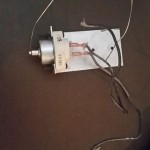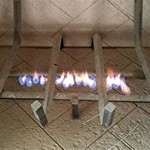Installing a Wood Burner Into an Existing Fireplace
Installing a wood burner into an existing fireplace can be a great way to improve the efficiency and aesthetics of your home. It can provide a warm and inviting atmosphere, while also offering a cost-effective way to heat your living space. However, this project requires careful planning and consideration to ensure safety and proper installation. This article will guide you through the essential steps to ensure a successful and safe installation of a wood burner into your existing fireplace.
Assessing Your Fireplace and Chimney
Before purchasing a wood burner, it is crucial to assess the condition of your existing fireplace and chimney. This involves checking for structural integrity, determining the size and shape of the fireplace opening, and inspecting the chimney's condition. A professional chimney sweep can perform a thorough inspection and identify any potential issues. If the fireplace or chimney needs repairs, addressing these problems before installing a wood burner is essential for safety and efficiency.
The size of your fireplace opening will determine the size of the wood burner you can install. It is crucial to choose a wood burner that fits appropriately within the fireplace opening, leaving sufficient clearance for airflow and safety. The chimney's condition is vital for safe operation. It should be free from cracks, blockages, and excessive creosote buildup. A clean and well-maintained chimney ensures efficient smoke removal and reduces the risk of chimney fires.
Choosing the Right Wood Burner
After assessing your fireplace and chimney, the next step is to choose the right wood burner. Consider factors like the size and shape of your fireplace opening, the heating capacity required for your space, and your budget. Different wood burners offer varying heating outputs, efficiency levels, and design features. You can choose from traditional wood-burning stoves, modern high-efficiency models, and even wood-burning inserts that fit seamlessly into your existing fireplace opening.
It is also important to consider the following elements when selecting a wood burner:
- Efficiency: Choose a wood burner with a high efficiency rating to maximize heat output and minimize fuel consumption.
- Safety features: Look for models with safety features like automatic shutdown mechanisms, overheat protection, and air-tight doors.
- Design and aesthetics: Select a wood burner that complements your fireplace and home decor.
- Ease of use: Choose a model that is user-friendly and easy to operate.
Professional Installation
Installing a wood burner is a technically demanding task that requires experience and expertise. It is strongly recommended to hire a qualified and certified installer to ensure a safe and efficient installation. A professional installer will have the necessary knowledge and tools to handle the installation process, including:
- Properly sizing and installing the wood burner: They ensure that the wood burner is correctly sized for your fireplace opening and installed according to safety guidelines and building codes.
- Connecting the flue pipe: They connect the wood burner's flue pipe to the chimney, ensuring a secure and airtight connection for safe smoke removal.
- Installing firestop material: They install firestop material around the wood burner and flue pipe to prevent the spread of fire.
- Testing and inspection: They test the installation and ensure it complies with safety standards.
A professional installation will not only ensure safety but also optimize the performance and efficiency of the wood burner. They can also provide valuable advice on operating and maintaining your wood burner for maximum efficiency and safety.
Additional Considerations
Beyond the core steps, there are additional considerations to ensure a successful installation of a wood burner into your existing fireplace:
- Building codes and permits: Ensure that your installation complies with local building codes and regulations. You may need to obtain permits or inspections before starting the project.
- Insurance coverage: Check with your insurance company about any potential changes to your policy due to the installation of a wood burner.
- Maintenance and cleaning: Regularly clean and maintain your wood burner and chimney to ensure optimal performance and safety.
Installing a wood burner into your existing fireplace is a significant investment that requires careful planning and execution. By following these steps and hiring a qualified professional, you can ensure a safe and efficient installation that will provide you with the warmth and comfort of a wood-burning fireplace for years to come.

Converting A Fireplace To Wood Burning Stove Chesneys

Converting A Fireplace To Wood Burning Stove Chesneys

Victorian Fireplace Hobbit Installation Small Stoves

Can You Install A Wood Stove In Fireplace Direct Stoves

Chimney Installations

How To Install A Wood Burning Fireplace Insert Fireplaces Direct Learning Center

Installing A Wood Burner Into An Existing Chimney Hetas Installation

Add A Wood Stove To An Existing Fireplace Flue Doityourself Com

Woodburner Installations In Victorian Fireplaces Cosy Stoves

Can You Install A Wood Burning Stove








